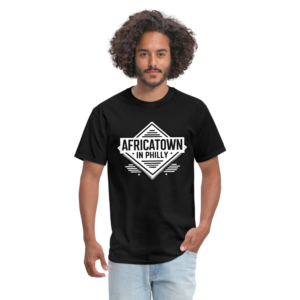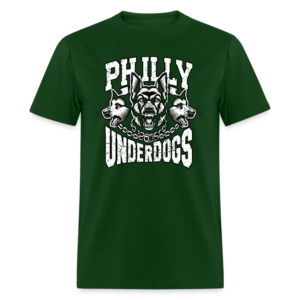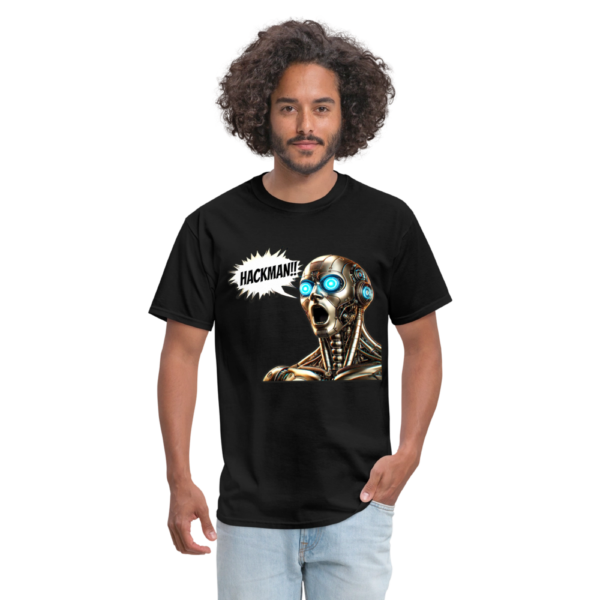Your cart is currently empty!
Tag: Waymo
Tesla’s Bold Move: The Rise of the Autonomous Robotaxi Revolution in Austin
Tesla has just set the stage for a seismic shift in the ride-sharing world. In a surprising turn, the electric vehicle giant has decided to opt out of a potential collaboration with Uber. Instead, Tesla is focusing its efforts on independently developing and deploying its very own autonomous robotaxi service. This strategic move not only signals Tesla’s confidence in its advanced autonomous driving technology but also sets up a direct competition with ride-sharing giants like Uber and tech pioneers like Waymo in Austin.
The New Era of Mobility: A Glimpse into Tesla’s Autonomous Future
Tesla’s decision to go solo marks a bold departure from conventional partnerships in the automotive industry. By choosing to control every aspect of its robotaxi service, Tesla aims to redefine the customer experience. This comprehensive approach means that Tesla will handle everything—from the vehicle design and software development to customer support and the overall ride experience. The goal is simple: to create a seamless, high-quality, and cost-effective transportation solution that could potentially outpace traditional ride-sharing models.
Why Tesla Opted for an Independent Strategy
The reasoning behind Tesla’s decision is rooted in its belief that full control over the autonomous service will allow for faster innovation and more agile responses to market demands. By eliminating the need to compromise with partners like Uber, Tesla can implement cutting-edge features and safety measures without the red tape that often accompanies joint ventures. This approach is expected to deliver lower operating costs, enhanced safety protocols, and a more integrated customer experience—advantages that could make Tesla’s robotaxi service a formidable challenger to established ride-sharing networks.
The Competitive Landscape in Austin
Austin has emerged as a hotbed for technological innovation and autonomous vehicle testing. With companies like Uber and Waymo already making inroads in the market, Tesla’s entry into the local scene is set to intensify the competition. Austin’s supportive regulatory environment, combined with its tech-savvy population, makes it an ideal location for piloting Tesla’s autonomous robotaxi service. As Tesla ramps up its efforts, the city could soon witness a transformation in how residents commute, with a growing number of autonomous vehicles on the roads.
Advanced Technology Meets Unprecedented Autonomy
Tesla’s advanced autonomous driving system has long been a topic of interest for both enthusiasts and critics alike. The company’s continuous improvements in self-driving algorithms, sensor technology, and machine learning have positioned it at the forefront of the autonomous revolution. By integrating these innovations into its robotaxi service, Tesla aims to offer an experience that is not only safer and more efficient but also more cost-effective.
Enhanced Safety and Lower Costs
One of the key selling points of Tesla’s approach is the potential for enhanced safety. Traditional ride-sharing services often rely on human drivers, which introduces variables like fatigue, distraction, and human error. Tesla’s robotaxi service, on the other hand, leverages a sophisticated network of sensors, cameras, and radar systems that work in unison to detect and react to obstacles on the road. This technology is designed to significantly reduce the risk of accidents, thereby creating a safer commuting option for users.
Moreover, by eliminating the need for human drivers, Tesla’s robotaxi service is projected to operate at a lower cost. Reduced labor expenses can translate into lower fares for passengers, making autonomous ride-sharing an attractive alternative to conventional models. This cost-efficiency could be a major driver in shifting consumer preferences, potentially rendering traditional ride-sharing services less competitive over time.
Superior Technology and User Experience
Tesla’s strategy goes beyond just safety and cost savings. The company is committed to delivering a superior user experience by integrating advanced features that are not typically found in traditional ride-sharing services. Imagine stepping into a vehicle where every detail, from the interior design to the software interface, is meticulously crafted to ensure comfort and convenience. With its state-of-the-art infotainment system, seamless connectivity, and personalized ride options, Tesla is setting new standards in customer service.
The ability to update and improve the system over time through over-the-air software updates further enhances the service. This continuous improvement model means that Tesla’s robotaxi service could become more efficient, safer, and user-friendly with each passing day. In a world where technology evolves rapidly, Tesla’s proactive approach positions it as a leader in the next generation of mobility.
The Impact on Traditional Ride-Sharing Models and Critics’ Concerns
While Tesla’s independent move is generating significant excitement, it is not without its critics. Some industry experts argue that by going solo, Tesla risks alienating potential partners and complicating the transition to a fully autonomous future. Critics contend that traditional ride-sharing companies like Uber have built a strong foundation through years of network effects, establishing a vast user base and robust support systems that could prove challenging to disrupt.
Could Tesla’s Model Render Uber Obsolete?
Detractors point out that the comprehensive control over the customer experience might be a double-edged sword. While it allows Tesla to innovate rapidly, it also places the entire burden of success on a single entity. In contrast, companies like Uber have cultivated significant market presence through partnerships, diversified services, and a strong brand identity. However, proponents of Tesla’s strategy argue that the potential for lower costs and superior technology could eventually make traditional ride-sharing models less attractive. As Tesla continues to refine its autonomous systems, the economic advantages may outweigh the benefits of an established network.
The Role of Network Effects and Established User Bases
Supporters of Uber emphasize that the company’s established user base and network effects remain significant competitive advantages. Even if other manufacturers, including Tesla, achieve similar autonomous capabilities, the ingrained loyalty and familiarity of millions of Uber users could help sustain its market dominance. The challenge for Tesla will be to not only match but exceed the convenience and reliability that users have come to expect from established ride-sharing platforms.
The debate between innovation and established market dominance is heating up. On one hand, Tesla’s revolutionary approach promises a future where autonomous vehicles provide safer, cheaper, and more enjoyable rides. On the other hand, the proven business models of companies like Uber suggest that there is still plenty of room for traditional ride-sharing services to thrive, especially if they can adapt quickly to technological advancements.
Looking Ahead: What Does the Future Hold?
Tesla’s independent journey into the autonomous robotaxi market is a clear indication of the broader transformation occurring within the transportation industry. As the lines between technology, mobility, and customer service continue to blur, consumers can expect a future where traditional models are constantly challenged by innovative newcomers. Whether Tesla’s approach will completely upend the industry remains to be seen, but one thing is certain: the race for the future of ride-sharing is heating up, and Austin is at the heart of this transformation.
The Potential for Disruption
If Tesla’s strategy pays off, the implications could be far-reaching. A successful rollout of an autonomous robotaxi service would not only revolutionize how people travel but also force competitors to rethink their strategies. Companies that rely heavily on human drivers may find themselves at a disadvantage as the benefits of automation—such as reduced costs, improved safety, and enhanced user experiences—become increasingly apparent. In this scenario, even well-established players like Uber might be compelled to accelerate their own autonomous initiatives or form new partnerships to keep pace.
What This Means for Consumers
For everyday consumers, the emergence of Tesla’s autonomous robotaxi service promises several tangible benefits. Lower fares, increased safety, and a more personalized ride experience are just a few of the advantages on offer. Additionally, the integration of advanced technology could lead to a reduction in traffic congestion and a more efficient use of urban infrastructure, particularly in tech-forward cities like Austin. The future of mobility is not just about getting from point A to point B—it’s about creating a holistic, integrated experience that enhances the quality of urban life.
Embracing the Change: Join the Conversation!
The automotive and tech industries are evolving at a breakneck pace, and Tesla’s recent move is just the tip of the iceberg. We want to hear from you! What are your thoughts on Tesla’s decision to independently develop its autonomous robotaxi service? Do you believe this will mark the beginning of the end for traditional ride-sharing models, or do established players like Uber have the resilience to adapt and thrive?
Drop your comments below and share your insights on this unfolding revolution. Your feedback is invaluable in shaping the future conversation around mobility and technology. And if you found this post engaging and informative, don’t forget to share it with your friends and on your social media platforms. Let’s spread the word about the transformative changes coming to our streets and the exciting future of autonomous travel!
Conclusion: The Road Ahead is Autonomous
Tesla’s bold decision to forgo a collaboration with Uber in favor of independently launching its autonomous robotaxi service signals a significant shift in the transportation landscape. With a focus on complete customer experience control, advanced technology, and cost efficiency, Tesla is positioning itself as a serious contender in the autonomous ride-sharing arena. The competition with Uber and Waymo in Austin is expected to drive rapid innovation, pushing all players in the industry to elevate their game.
As we witness this dynamic evolution, one thing remains clear: the future of mobility is autonomous, and the choices made by industry giants today will shape the way we travel tomorrow. Stay tuned for more updates and join the conversation by commenting and sharing your thoughts on this revolutionary development.
Robot Driver Yelling Hackman Unisex Classic T-Shirt
$19.99Robot Driver Yelling Hackman Unisex Classic T-Shirt. Rep your city and humor with the Robot Driver Yelling Hackman Unisex Classic T-Shirt!
Featuring a playful twist on the nickname “Hackman” (unofficial taxis in the hood), this tee combines futuristic tech with street-smart culture. A perfect blend for those who love humor, city life, and the hustle of everyday adventures!
-

Hungry and Humble Football Player Flapping Arms Touchdown Celebration Unisex Classic T-Shirt #philly
$19.99 Select options This product has multiple variants. The options may be chosen on the product page -

Africatown in Philly Phrase Unisex Classic T-Shirt
$13.99 Select options This product has multiple variants. The options may be chosen on the product page -

Vintage Funny Cat Selfie UFO Alien Invasion Unisex Classic T-Shirt
$13.99 Select options This product has multiple variants. The options may be chosen on the product page -

Vintage Philly Underdogs German Shepherds Unisex Classic T-Shirt
$9.99 Select options This product has multiple variants. The options may be chosen on the product page -

Voxel Art Anime Cat Eating Ramen Noodles Unisex Classic T-Shirt
$19.99 Select options This product has multiple variants. The options may be chosen on the product page
————————————————
We use AI GPT Chatbots to help with our content and may get some things wrong.
————————————————-
-
Daniel Ho Joins Waymo as Program Director: What It Means for the Autonomous Vehicle Industry
In a groundbreaking move, Daniel Ho, Tesla’s former Head of Vehicle Programs and New Product Integration, has announced his new role at Waymo as Program Director. This transition marks a significant moment in the autonomous vehicle industry, merging Ho’s extensive experience at Tesla with Waymo’s ambitious goals in developing self-driving technology. Ho’s career shift brings new energy and expertise to Waymo, positioning the company to make further strides in autonomous driving technology.
Who is Daniel Ho?
Daniel Ho is an engineering and technology leader with a stellar background in automotive innovation, product development, and engineering program management. He is widely known for his work at Tesla, where he served as the Head of Vehicle Programs and New Product Integration. During his tenure at Tesla, Ho was instrumental in leading key vehicle programs and overseeing the integration of new products into the market. His contributions to Tesla’s electric vehicle (EV) programs are significant, helping the automaker become one of the most recognized brands in sustainable transportation.
A Brief Overview of Ho’s Career at Tesla
Ho’s journey at Tesla was marked by significant accomplishments, especially in the field of new product integration and vehicle programs. As Tesla revolutionized the electric vehicle industry, Ho was at the forefront of this innovation, overseeing the execution of some of the company’s most critical projects. These included the development and launch of iconic Tesla models, including the Model S, Model 3, Model X, and Model Y. His leadership in vehicle programs played a crucial role in scaling Tesla’s production capacity and delivering advanced EV technology to the masses.
At Tesla, one of Ho’s key responsibilities was managing cross-functional teams to deliver new products on schedule. This required not only deep technical expertise but also the ability to lead diverse teams of engineers, designers, and production specialists. His role involved ensuring that Tesla’s vehicles met high standards of performance, quality, and safety, all while adhering to tight deadlines. Ho’s work was also critical in Tesla’s ability to adapt to market demands and integrate emerging technologies into its fleet.
Daniel Ho’s Move to Waymo: What Does It Mean?
With his move to Waymo, Daniel Ho brings an unmatched combination of technical expertise and strategic leadership. Waymo, a subsidiary of Alphabet Inc., is at the cutting edge of the autonomous vehicle industry, developing self-driving cars with a vision to create safe and fully autonomous mobility solutions. As Program Director, Ho will oversee key aspects of the company’s autonomous vehicle projects, helping to drive innovation and further refine Waymo’s self-driving technology.
This move is especially important as Waymo ramps up its efforts to expand its autonomous vehicle fleet and improve the capabilities of its Waymo Driver system. Ho’s experience in overseeing vehicle programs and integrating cutting-edge technology into Tesla’s vehicles aligns perfectly with Waymo’s goals of creating reliable, high-performance autonomous cars.
The Growing Competition in the Autonomous Vehicle Industry
Daniel Ho’s transition from Tesla to Waymo comes at a critical time in the autonomous vehicle industry. Companies like Tesla, Waymo, Cruise (a subsidiary of General Motors), and Zoox (owned by Amazon) are all vying to lead the market in autonomous driving technology. Each company has made significant strides in developing autonomous systems, but challenges remain in perfecting the technology and bringing it to mass-market adoption.
Waymo is widely regarded as one of the frontrunners in this race. The company has already launched robotaxi services in select cities, including Phoenix, Arizona, and San Francisco, California. These services are powered by the Waymo Driver, an advanced autonomous driving system that has logged millions of miles in real-world and simulated environments. Despite these advancements, the technology is still in a nascent phase, and significant challenges remain in scaling these systems to operate in more complex urban environments and under different weather conditions.
Ho’s experience at Tesla, where he helped oversee vehicle production at scale, will be invaluable as Waymo navigates these challenges. The ability to integrate new technologies quickly and efficiently into vehicles will be critical to Waymo’s future success.
The Future of Waymo Under Ho’s Leadership
As Program Director, Daniel Ho will likely focus on several key areas to accelerate Waymo’s growth:
- Scaling Vehicle Production: One of the key challenges for Waymo is scaling its autonomous vehicle fleet to meet growing demand. Ho’s experience in ramping up Tesla’s production will help Waymo refine its production processes and supply chain management, ensuring the company can meet its ambitious expansion targets.
- Integrating New Technologies: The autonomous vehicle landscape is rapidly evolving, with new sensors, AI algorithms, and computing systems emerging regularly. Ho’s background in integrating new technologies at Tesla will help Waymo stay at the forefront of innovation. He will likely oversee efforts to enhance the Waymo Driver system with improved sensors, better decision-making algorithms, and more advanced safety features.
- Enhancing Safety and Reliability: Autonomous vehicles must meet stringent safety standards before they can be widely adopted. Ho’s experience in ensuring Tesla vehicles met high safety standards will be instrumental in helping Waymo improve the safety and reliability of its self-driving cars.
- Expanding Commercial Applications: Waymo is not only focused on passenger vehicles but also on commercial applications, including autonomous trucks and last-mile delivery services. Under Ho’s leadership, Waymo could further expand its commercial offerings, leveraging his experience in bringing new products to market quickly and efficiently.
Why Daniel Ho’s Move is a Win for Waymo
For Waymo, bringing in a seasoned expert like Daniel Ho is a strategic move. His vast experience in vehicle program management, combined with his deep knowledge of cutting-edge automotive technology, positions Waymo to lead the industry in innovation. With Ho at the helm, the company can expect to improve its ability to bring autonomous vehicles to market faster, more efficiently, and with a greater focus on quality.
Moreover, Ho’s transition to Waymo may signal a shift in the broader autonomous vehicle industry. With increasing competition and growing demand for self-driving technology, top talent from industry leaders like Tesla is highly sought after. Waymo’s ability to attract talent from Tesla is a testament to its commitment to innovation and its potential to shape the future of mobility.
Conclusion
Daniel Ho’s move to Waymo as Program Director marks a pivotal moment for both his career and the autonomous vehicle industry. With his extensive background at Tesla, where he played a critical role in scaling vehicle production and integrating new products, Ho brings a wealth of knowledge to Waymo. His leadership is expected to drive innovation, improve safety, and scale Waymo’s autonomous vehicle programs. As the race to dominate the autonomous vehicle market heats up, Ho’s expertise will be crucial in helping Waymo stay ahead of the competition and bring fully autonomous vehicles closer to widespread adoption. The autonomous vehicle industry is evolving rapidly, and with key players like Daniel Ho joining Waymo, the future looks more promising than ever.
-

Hungry and Humble Football Player Flapping Arms Touchdown Celebration Unisex Classic T-Shirt #philly
$19.99 Select options This product has multiple variants. The options may be chosen on the product page -

Africatown in Philly Phrase Unisex Classic T-Shirt
$13.99 Select options This product has multiple variants. The options may be chosen on the product page -

Vintage Funny Cat Selfie UFO Alien Invasion Unisex Classic T-Shirt
$13.99 Select options This product has multiple variants. The options may be chosen on the product page -

Vintage Philly Underdogs German Shepherds Unisex Classic T-Shirt
$9.99 Select options This product has multiple variants. The options may be chosen on the product page -

Voxel Art Anime Cat Eating Ramen Noodles Unisex Classic T-Shirt
$19.99 Select options This product has multiple variants. The options may be chosen on the product page
————————————————
We use AI GPT Chatbots to help with our content and may get some things wrong.
————————————————-









